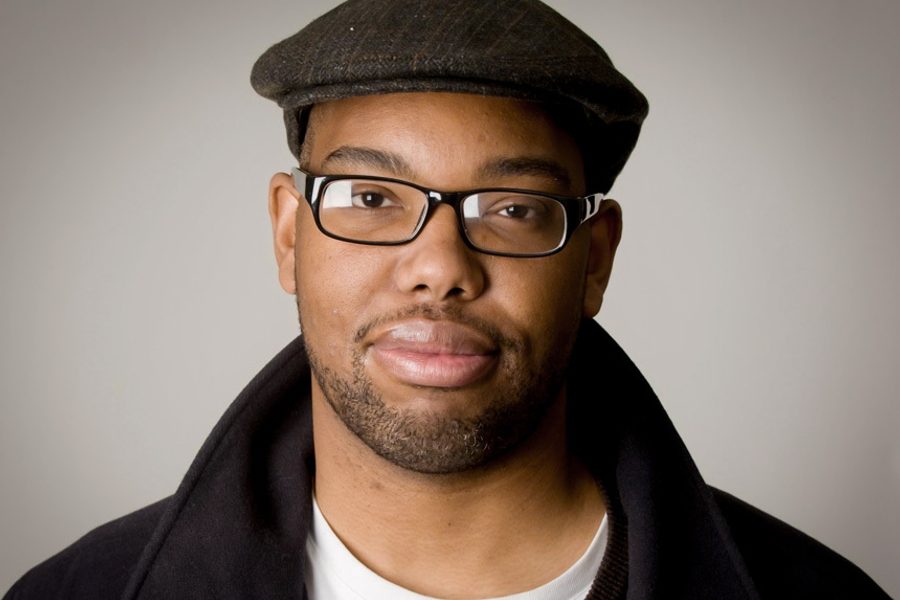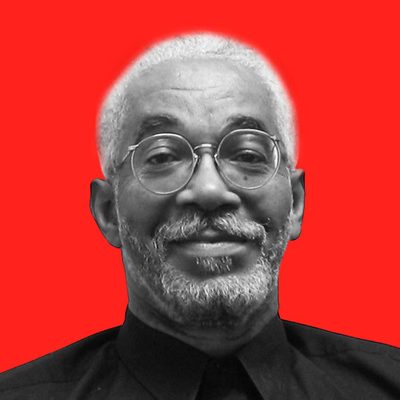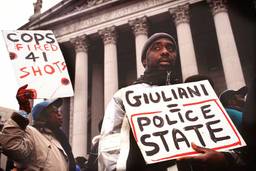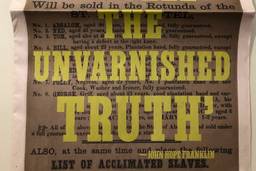Ta-Nehisi Coates’ “Between the World and Me” Forever Changes the Meaning of ‘The American Dream’
How to make Americans accept that their country was built and sustained on white supremacist plunder? Write like Ta-Nehisi Coates.
Salim Muwakkil

Ta-Nehisi Coates overtly summons his literary ancestors in his slim new memoir, Between the World and Me. The book borrows its epistolary structure and elliptical style from James Baldwin’s book of essays, The Fire Next Time, and takes its title from a Richard Wright poem. These literary reference points serve to mark Coates’s move away from the empirical to the lyrical; from the journalistic to the expressionistic. Coates is best known for the history-saturated cover essay of the June 2014 issue of The Atlantic, “The Case for Reparations,” a tour de force of painstaking research and one of most-discussed magazine pieces in decades. The conversation it initiated about the moral necessity of attending to slavery’s legacy is still taking place beneath the rumble of public discourse, with Coates as its main facilitator.
By framing Between the World and Me as a letter to his 15-year-old son, Samori, Coates can combine memoir and history, anecdote and analysis, which provides him a larger palette to convey the emotional complexity of black life.The letter is a version of “the talk” — that pre-emptive conversation that black parents must have with their children to protect them from the racist excesses of the police — provoked by Samori’s stunned reaction to the announcement that no charges would be brought against the Ferguson cop who killed Michael Brown. But it is also a broader meditation about the experience of growing up black in America.
In memoir mode, Coates writes movingly about his early life in West Baltimore, where the cops and the boys on the block were omnipresent forces of fear. Lest Samori miss the message that Black American life is not just a tableau of tragedy, Coates describes his fondness for Howard University (what he calls “the Mecca”) and the dizzying diversity of blackness he found there. In short passages, Coates manages to evoke the vibrancy of life on Howard’s campus, and by extension many other HBCUs (historically black colleges and universities):
I saw everything I knew of my black self multiplied out into seemingly endless variations. There were the scions of Nigerian aristocrats in their business suits giving dap to bald-headed Q’s in purple windbreakers and tan Timbs. There were high-yellow progeny of A.M.E. preachers debating the clerics of Ausar-Set. There were California girls turned muslim, born anew, hijab and long skirt. There were Ponzi schemers and Christian cultists, Tabernacle fanatics and mathematical geniuses. It was like listening to a hundred different renditions of “Redemption Song,” each in a different color and key.
He also draws loving portraits of the women in his life and writes rapturously of the endearing social rituals of black American culture. Describing his early years, Coates notes:
To be black in Baltimore of my youth was to be naked before the elements of the world, before all the guns, fists, knives, crack, rape and disease. The nakedness is not an error, nor pathology. The nakedness is the correct and intended result of policy, the predictable upshot of people forced for centuries to live under fear.
The book has insightful, quotable sentences on virtually every page. Although it’s a searing polemic, Coates nestles it in sentences so lyrical that it has a gentle literary resonance.
Perhaps that’s one reason why the book’s caustic message — that America was built and sustained on white supremacist plunder — has struck such a perverse chord with white Americans. Between the World and Me has received mostly glowing reviews from critics spanning the political spectrum. Even David Brooks, the New York Times’ sensible conservative, praised it as “a mind-altering account of the black male experience. Every conscientious American should read it.” And clearly, this is Coates’s intended audience, despite the epistolary gesture to his teenaged son.
Coates’s literary flourishes do tend to irk ideologues. Cornel West challenged Toni Morrison’s assertion that Coates is Baldwin’s intellectual heir and took Coates to task for not including an “analysis of capitalist wealth, inequality, gender domination, homophobic degradation, imperial occupation … and collective fight-back (not just personal struggle).” But West is wrong about Coates’s lack of structural analysis, and he’s also off in the unfavorable comparison to Baldwin, who also was flayed by the ideologues of his time for his arch prose and personal concerns.
Coates goes deep into the heart of his subject, arguing that “race is the child of racism, not the father and has never been a matter of genealogy and physiognomy so much as one of hierarchy.” The idea of race as an indelible attribute “is a new idea at the heart of these new people who have been brought up hopelessly, tragically, deceitfully, to believe that they are white.” These people are a “modern invention” whose whiteness “has no real meaning divorced from the machinery of criminal power. The new people were something else before they were white — Catholic, Corsican, Welsh, Mennonite, Jewish — and if all our national hopes have any fulfillment, then they will have to be something else again. Perhaps they will truly become American and create a nobler basis for their myth.” Coates believes that until the structures — and presumptions — of white supremacy are publicly acknowledged and addressed, America’s egalitarian promise is impossible to fulfill.
Coates argues that Americans who believe themselves to be white are so firmly encased in “The Dream,” his term for the visions of suburban bliss and domestic tranquility used to obscure the racist brutalities that still sustain America, that they can only be rudely awakened. They must be made aware that America prospered on the ideas and benefits of a white supremacy that remains deeply embedded in its culture and institutions.
The need to divest the American people of these naïve, obscuring myths is the animating force of Coates’s urgent dispatch. The accelerated schedule of the book’s publication is sign of that urgency. Originally slated for a September release, it was bumped up due to the growing tumble of racially charged incidents known as a litany of names — Tamir Rice, Eric Garner, Walter Scott, Michael Brown — and most recently, the massacre of nine people in a Charleston church by a white supremacist.
But while it is an urgent intervention, the book is not a manual of solutions or a heartening call for optimism. Coates’s message is grim. He continually brings us back to the white supremacism and savage brutality that created this country:
As for now, it must be said that the process of washing the disparate tribes white, the elevation of the belief in being white was not achieved through wine tastings and ice creams socials, but rather though the pillaging of life, liberty, labors and land though the flaying of blacks, the chaining of limbs, the strangling of dissidents, the destruction of families, the rape of mothers; the sale of children, and various other acts meant, first and foremast, to deny you and me the right to secure and govern our own bodies.
Coates’s use of the term “bodies” is an intentional effort to portray the physicality of racism, which he describes as a visceral experience that “dislodges brains, blocks airways, rips muscle, extracts organs, cracks bones, and breaks teeth.” In interviews, Coates attributes this focus to insights from feminism. Yet, and this is one of the few criticisms of the book, there is scant mention of the violation of black female bodies, except the note that early America featured “rape so regular as to be industrial.”
Coates pulls no punches in his efforts to wake up white America. But he also makes no guarantees that such an awakening will inspire positive racial change. He is certain, however, that without it, improvement won’t happen.
It’s an unsparing diagnosis and he does not seek to shelter his son from its bite. “You have to make your peace with the chaos,” he writes, “but you cannot lie. You cannot forget how much they took from us and how they transfigured our very bodies into sugar, tobacco, cotton and gold.”
As he tells Samori, there are no magic bullets. “I am sorry that I cannot make it okay. I am sorry that I cannot save you. But not that sorry,” he writes, urging his son and his audience to embrace our vulnerability as our true position in the universe; a kind of noble realism. “The struggle is really all I have for you because it is the only portion of this world under your control.”
It’s a bleak conclusion, but one that activists for racial justice should take to heart. A life of struggle against an embedded system of white supremacy probably won’t be enjoyable. It likely will be thankless and exhausting. But for those living within that seemingly implacable system, like Samori, and the rest of us, it’s the only thing under our control.
Salim Muwakkil is a senior editor of In These Times and host of “The Salim Muwakkil Show” on radio station WVON-AM in Chicago. Muwakkil was also contributing columnist for both the Chicago Sun-Times (1993 – 1997) and the Chicago Tribune (1998 – 2005). He is also a co-founder of Pacifica News’ network daily “Democracy Now” program and served as an adjunct professor at Northwestern University, University of Illinois, the Art Institute of Chicago and Chicago’s Columbia College.









